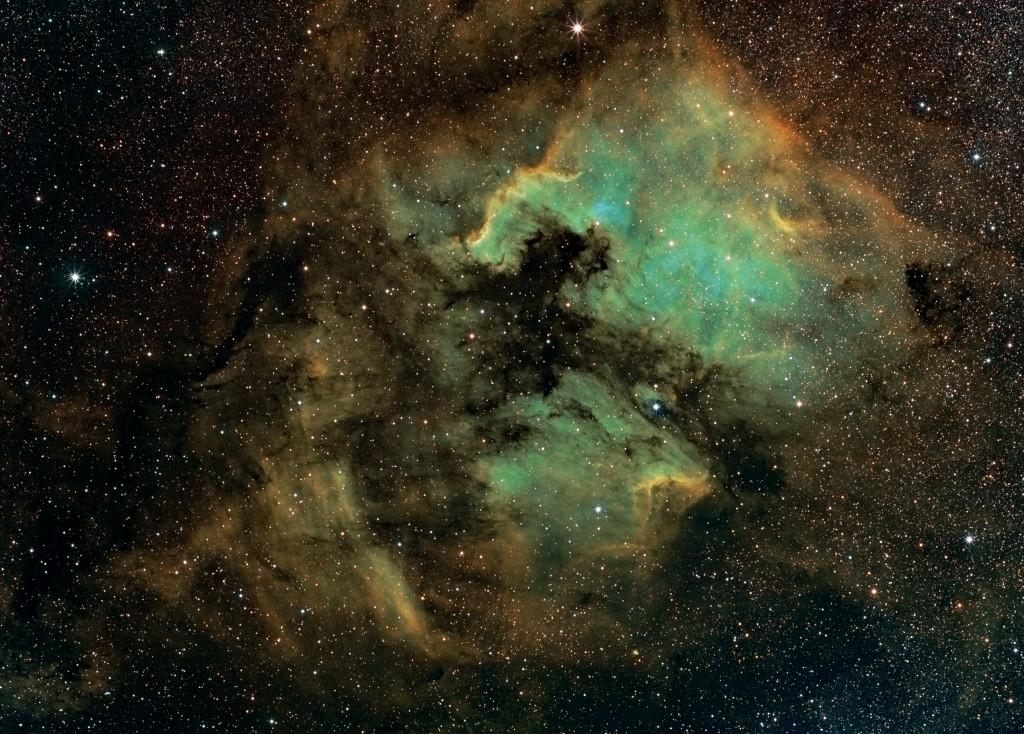 The North America and Pelican nebulae are a pair of emission nebulae in the constellation of Cygnus. Both nebulae are part of the same interstellar cloud of ionised hydrogen (H II region). Between us and the H II region is a band of interstellar dust that is absorbing the light of the stars and nebulae behind and which gives the shape to the nebulae as we see them. In this wide-field image it is easy to see how these nebulae got their names. The distance of the nebulae are not precisely known nor is the star responsible for ionising the hydrogen so that it emits light. If the star is Deneb as is often assumed then the nebula complex would be about 1,800 light years distant and 100 light years across.
The North America and Pelican nebulae are a pair of emission nebulae in the constellation of Cygnus. Both nebulae are part of the same interstellar cloud of ionised hydrogen (H II region). Between us and the H II region is a band of interstellar dust that is absorbing the light of the stars and nebulae behind and which gives the shape to the nebulae as we see them. In this wide-field image it is easy to see how these nebulae got their names. The distance of the nebulae are not precisely known nor is the star responsible for ionising the hydrogen so that it emits light. If the star is Deneb as is often assumed then the nebula complex would be about 1,800 light years distant and 100 light years across.
This is the first light image from the QSI-583 Pentax 6×7 lens wide-field imaging rig I built over the summer. The rig is mounted on an EQ6 mount housed in the Anser observatory – my relocated observatory situated in the Polden Hills of Somerset
Right ascension: 20h 52m 52.2s | Declination: +43° 45′ 06.8″ | Distance: 1,800 Light Years
Field of view: 373 x 281 arcmin
Camera: QSI 583
Telescope: SMC Pentax 6×7 165mm Lens F/2.8
Guiding: Off-axis with Lodestar guider
Filters: Baader Ha (7nm), OIII (8.5nm), SII (8nm)
Exposures: Ha 23 x 15 min, OIII 25 x 15 min, SII 32 x 15 min
Total exposure: 20 hours
Image composition: False Colour Hubble Palette (RGB mapped to SII, Ha, OIII)
Scale: 6.7 arcsec/pixel
Image acquired: July – September 2014
Image capture with MaxIm DL, FocusMax, ACP; Image processed with MaxIm DL and Photoshop CS4